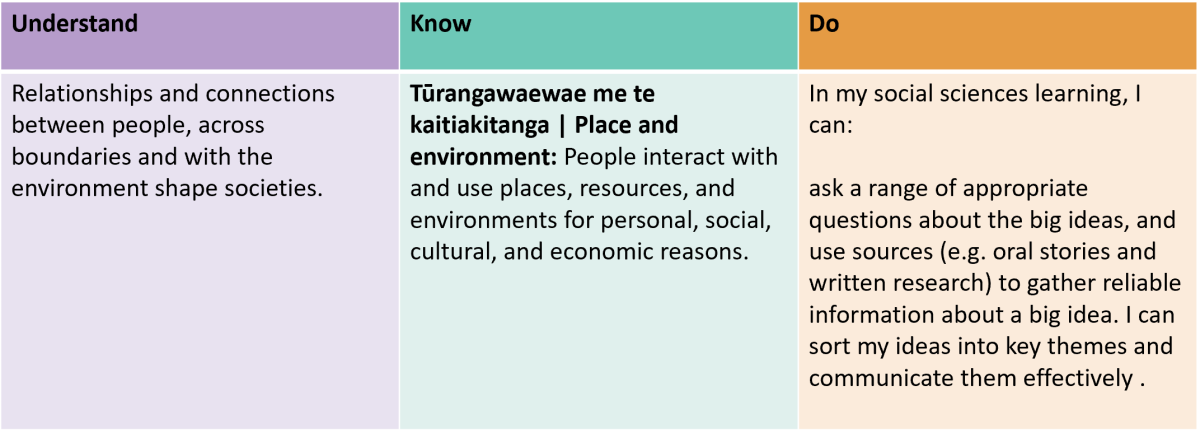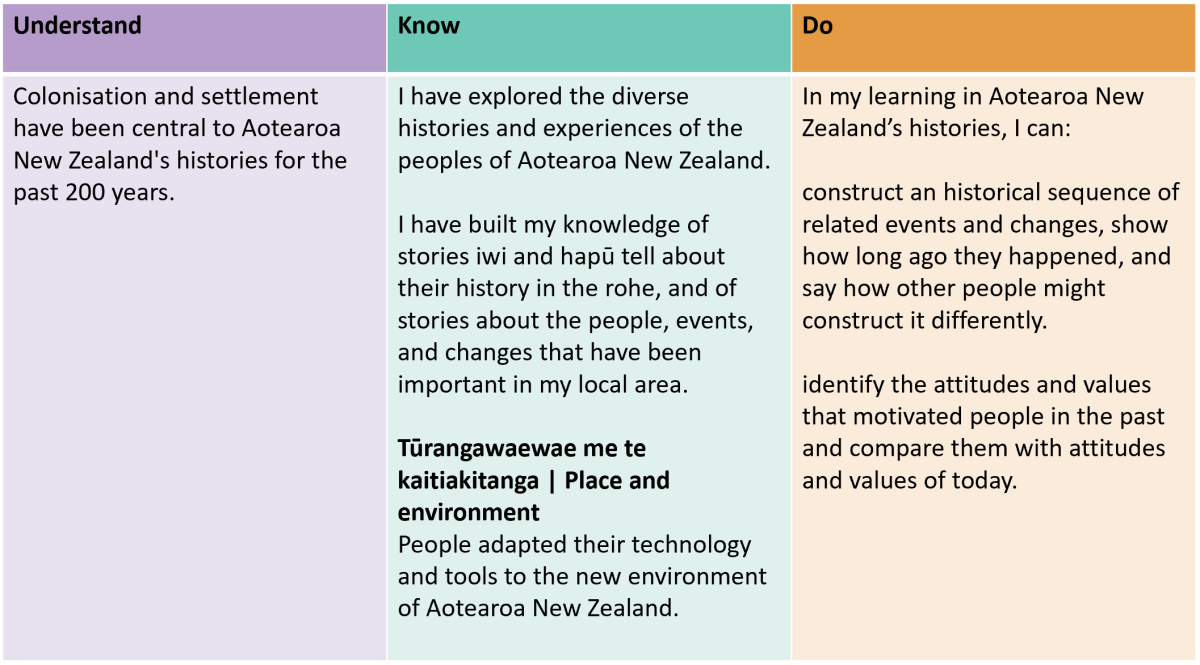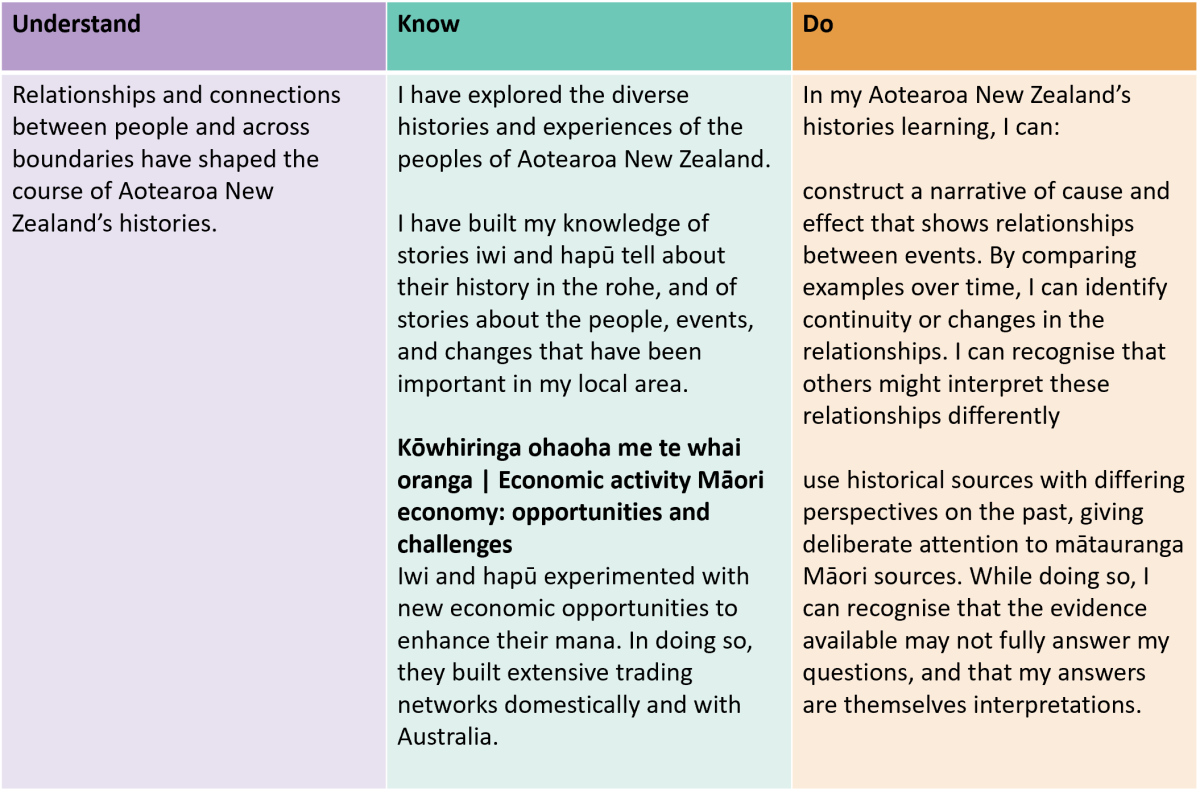<- Homepage: Taonga tuku iho: keeping our heritage alive. Also Resources and Glossary.

New Zealand Curriculum (NZC)
This field trip supports a cross-curricular approach to teaching and learning. It is guided by the 2007 New Zealand Curriculum and Te Mātaiaho –The Refreshed New Zealand Curriculum. It aligns best with, but is not limited to, the learning areas, year groups and progressions presented below.
Select one or more learning areas, concepts and progress outcomes to suit your students’ interests and learning needs.
Use this learning experience as a springboard for multiple areas of inquiry. Look for ways to make connections to learning that matters nationally and locally.
Te ao tangata | Social sciences
Progress outcome by end of year 6:

Aotearoa New Zealand’s histories–within Te ao tangata | Social sciences
Progress outcome by end of year 6:

Progress outcome by end of year 8:

Kōwhiringa ohaoha me te whai oranga | Economic activity
Key question:
- What stories do iwi and hapū tell about their experiences with new economic activities? What opportunities and barriers were there?
- How did iwi adapt their economic activities to take advantage of opportunities presented by Pākehā and the international economy? What factors damaged Māori economic activity?
Learning experiences – Explore examples of:
- iwi and hapū adaptations to new economic opportunities – for example, gold mining (e.g., guiding miners through passes to the West Coast, mining in the Aorere Valley), geothermal tourism, flour mills (e.g., in the Waikato, Taranaki, Whanganui, Rotorua, and Wairarapa), shipping (e.g., the purchase of vessels by iwi from the Bay of Islands, Hauraki, the Bay of Plenty, the East Coast, and Poverty Bay to transport essential produce for sustaining early European towns), and food production to supply growing European settlements (e.g., Nelson was entirely dependent on Māori for supplies; potatoes, wheat, and pigs were supplied to Wellington; Ngāi Tahu sold potatoes from Taieri and Moeraki at Ōtākou, near Dunedin).
English (NZC 2007)
Listening, reading and viewing
Ideas: Show a developing understanding of ideas within, across, and beyond texts.
E.g. Indicators at level 3:
- uses their personal experience and world and literacy knowledge confidently to make meaning from texts
- makes meaning of increasingly complex texts by identifying main and subsidiary ideas in them
- starts to make connections by thinking about underlying ideas in and between texts
- recognises that there may be more than one reading available within a text
- makes and supports inferences from texts with increasing independence.



